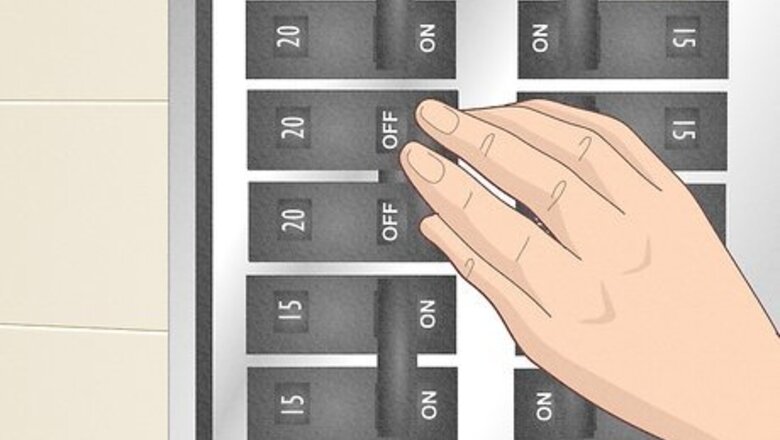
views
Locate the circuit breaker.
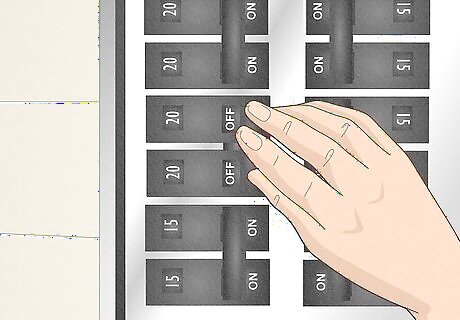
Switch the appropriate room's circuit breaker panel to the "OFF" position. Before unplugging or disconnecting electrical wires, look for a matte grey metal box in your home's basement, garage, utility closet, or hallway. Flip the corresponding switch to the "OFF" position to prevent electrical shocks. For example, look for the corresponding "KITCHEN" or "RANGE HOOD" circuit breaker. You may have a fuse box if you have an older home. Pull the fuse block out and insert the block back in place with the "OFF" side facing up. If your range hood is a ductless plug-in, unplug it and skip this step.
Remove the existing range hood.
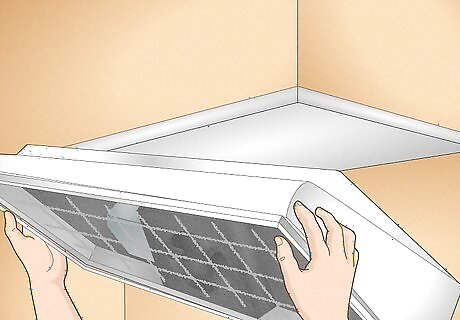
Unscrew the wire nuts and separate the connections from the old hood. If you have an existing range hood, take a screwdriver to loosen the screws that hold the hood in place. Have a partner hold the old range hood in place. Lift the hood slowly off the screws, place it down, and remove the loosened screws. Use a pair of pliers to pull the wire fitting from the hood. If you don't have an existing range hood, skip this step.
Locate and mark the vent holes.

Use a paper template or tape measure to mark the vent holes. Many range hoods have a paper template to measure where the vent holes will go for installation. If not, use a tape measure to get the measurements of the hood and wall. Line the template or tape measure to the middle of the wall and mark or tape it off. A range hood should hang at least 26 inches (66 cm) to 36 inches (91 cm) above the cooking surface. This will ensure any smoke or fuels are adequately removed or filtered from your home. Opt for a range hood with the correct CMF rating, which refers to how much air the vent can pull per minute. To find the right CFM rating, multiply the square footage of your kitchen by 2. 250 CFM is a respectable amount for an average-sized kitchen, while 400 CFM is ideal. If you are replacing your range hood and already have the required ventilation ducts or installing a ductless range hood, skip this and go to step 9.
Cut a 6 in (15 cm) hole for a vent.
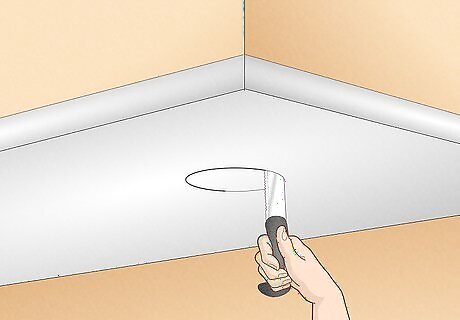
Use an oscillating tool to carve out the template shape. Start with a small hole to ensure no plumbing or wiring could interfere with the range hood. Any wiring or plumbing may require professional help. If the space is clear, open the hole with an oscillating tool or reciprocating saw. Take a long drill bit to place locator holes on the edges of the vent hole that extend to the exterior. If pipes block the vent, reroute and re-solder the pipes so that it leaves your opening free. Drill 1 x 3 cleats to the top and bottom of the wall to support the new wall patch. Drill, tape, and mud the new wall patch to cover the hole entirely. Then, when it's dry, remove the original cutout for the exhaust again with your template and cut a hole.
Cut an exterior vent pipe hole.
Draw a circle to connect the locator holes before making your cut. The locator holes you drilled in the previous step will allow you to find them on the exterior wall of your home. With your pencil, draw a circle that connects all four holes. Use an oscillating tool or reciprocating saw to cut the exterior hole out. If the exterior of your home is paneled or uneven, use a piece of PVC trim to create an even surface to cut through.
Attach and caulk the vent cap.
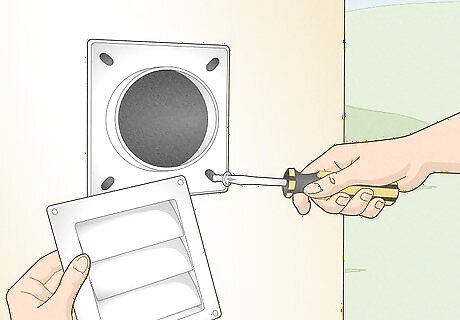
Slip the duct or range hood vent cap into the exterior opening. The cap should be long enough to connect to the range hood. Attach it with four screws. Once it's secure, apply a thin bead of caulk around the edges so the seal is waterproof. The exhaust must travel through the duct outside the home, not the walls or attic, as this keeps fumes and smoke inside your home, creating mold and similar issues.
Measure the damper, if necessary.
Hold the damper against the interior hole to measure the duct size. Some vent hoods have a damper situated inside the ductwork. It prevents debris or small animals from entering your home from the exterior hole. It opens when you turn the range hood on and shuts when you turn it off. Once you have the measurements, mark the outside of the damper for reference to tape the ductwork with duct or foil tape.
Run the electrical wiring through.
Slide the electrical wiring from the hood to the electrical box. Position the new range hood where it'll go to run the wire through. If necessary, drill holes next to either side of the vent to feed the wire through. It's helpful to have a second person balance the range hood while you do this. If the wires aren't long enough or you don't feel confident, contact a professional electrician to avoid damaging yourself or your home.
Drill mounting brackets into the wall.
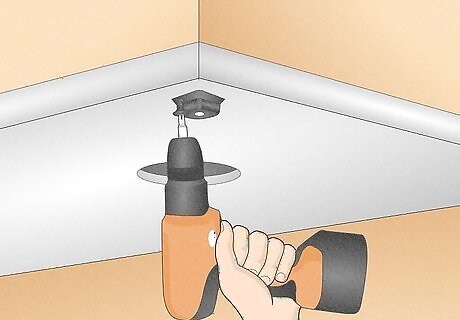
Position the range hood to mark where the drill holes go. With the help of a partner, slip the range hood where it will be mounted. Take a pencil and mark out the four holes on each corner of the hood. Then, remove the range hood and use an electric drill to drill out the pilot holes. If you're mounting directly into a wall using brackets, drill the screws fully into the wall. If you're mounting into a cabinet, drill the screws halfway so the hood can slip over the screws and rest on top.
Mount the new range hood.
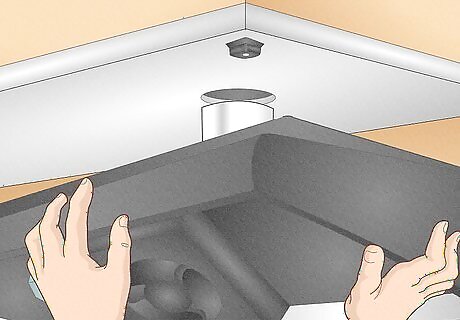
Slip the range hood in position and tighten each screw. Slowly tighten each screw with an electric drill or manually, but don't tighten it all the way just yet. Use a level to ensure the hood is even before completely tightening each screw flush to the wall or cabinetry.
Connect the wires.
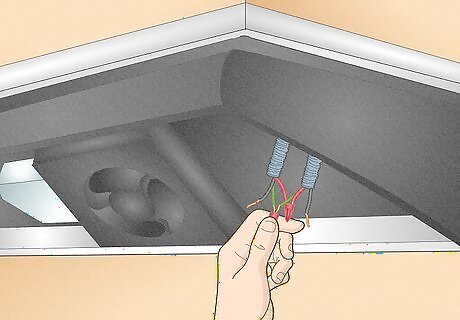
Connect the corresponding wire colors. Run the cable from inside the wall through the cable hole in the hood. The fan and light have black and white wires that should be attached. Connect the two black wires from inside the hood to the one black wire from inside the wall. Repeat with the white wires, too. Fasten the green grounding wire from the wall to a grounding screw in the range hood. If you're using a ductless range hood, you only need to plug it into an outlet. No wires necessary! If needed, use a wire stripper to remove the exterior of the wires back to connect them with wire connectors.
Attach range hood accessories.
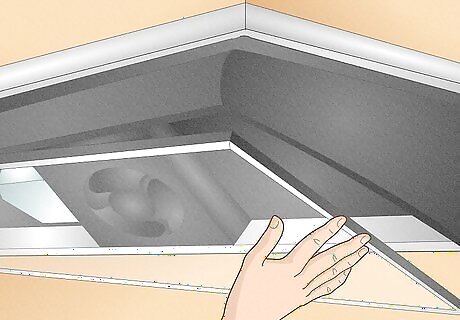
Add filters and fasten grease guards onto the hood. Once the wiring is connected, slip the stainless steel or aluminum filter from the middle of the range hood. It should pop in easily. Then, fasten the grease guards onto the hood. Finally, install the vent covers referring to your model's owner's manual for detailed instructions.
Test the range hood.
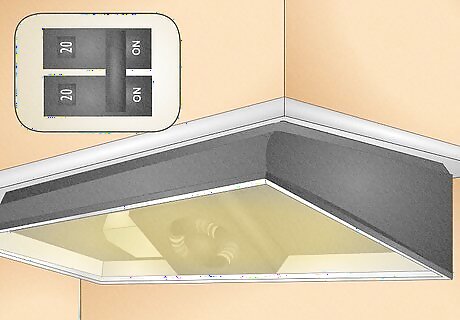
Flip the circuit breaker to the "ON" position. Power on the range hood and test the workability of the fan and light. Check the duct outside and feel for air pushing out to ensure proper ventilation.




















Comments
0 comment